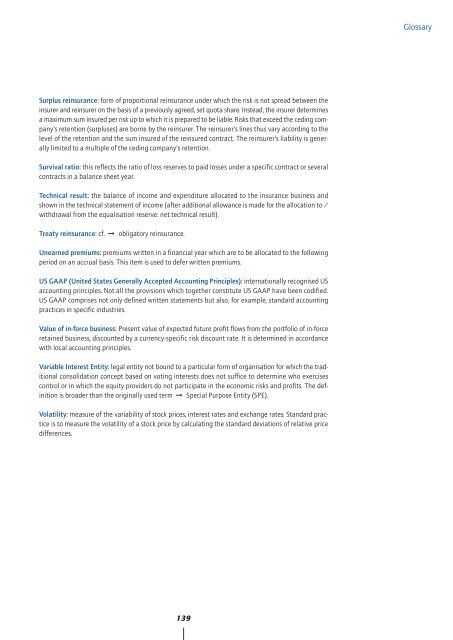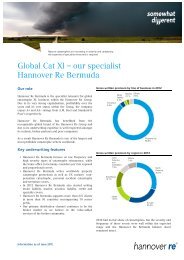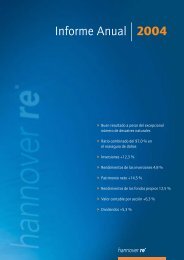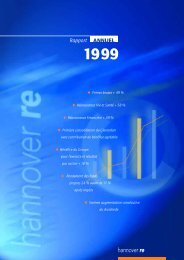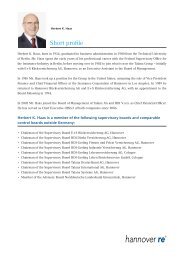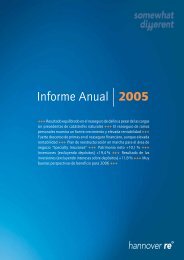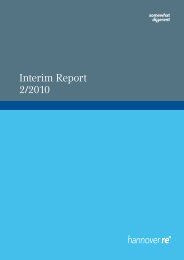Annual Report 2003 - Hannover Re
Annual Report 2003 - Hannover Re
Annual Report 2003 - Hannover Re
You also want an ePaper? Increase the reach of your titles
YUMPU automatically turns print PDFs into web optimized ePapers that Google loves.
Glossary<br />
Surplus reinsurance: form of proportional reinsurance under which the risk is not spread between the<br />
insurer and reinsurer on the basis of a previously agreed, set quota share. Instead, the insurer determines<br />
a maximum sum insured per risk up to which it is prepared to be liable. Risks that exceed the ceding company's<br />
retention (surpluses) are borne by the reinsurer. The reinsurer's lines thus vary according to the<br />
level of the retention and the sum insured of the reinsured contract. The reinsurer's liability is generally<br />
limited to a multiple of the ceding company's retention.<br />
Survival ratio: this reflects the ratio of loss reserves to paid losses under a specific contract or several<br />
contracts in a balance sheet year.<br />
Technical result: the balance of income and expenditure allocated to the insurance business and<br />
shown in the technical statement of income (after additional allowance is made for the allocation to /<br />
withdrawal from the equalisation reserve: net technical result).<br />
Treaty reinsurance: cf. ➞ obligatory reinsurance.<br />
Unearned premiums: premiums written in a financial year which are to be allocated to the following<br />
period on an accrual basis. This item is used to defer written premiums.<br />
US GAAP (United States Generally Accepted Accounting Principles): internationally recognised US<br />
accounting principles. Not all the provisions which together constitute US GAAP have been codified.<br />
US GAAP comprises not only defined written statements but also, for example, standard accounting<br />
practices in specific industries.<br />
Value of in-force business: Present value of expected future profit flows from the portfolio of in-force<br />
retained business, discounted by a currency-specific risk discount rate. It is determined in accordance<br />
with local accounting principles.<br />
Variable Interest Entity: legal entity not bound to a particular form of organisation for which the traditional<br />
consolidation concept based on voting interests does not suffice to determine who exercises<br />
control or in which the equity providers do not participate in the economic risks and profits. The definition<br />
is broader than the originally used term ➞ Special Purpose Entity (SPE).<br />
Volatility: measure of the variability of stock prices, interest rates and exchange rates. Standard practice<br />
is to measure the volatility of a stock price by calculating the standard deviations of relative price<br />
differences.<br />
139


